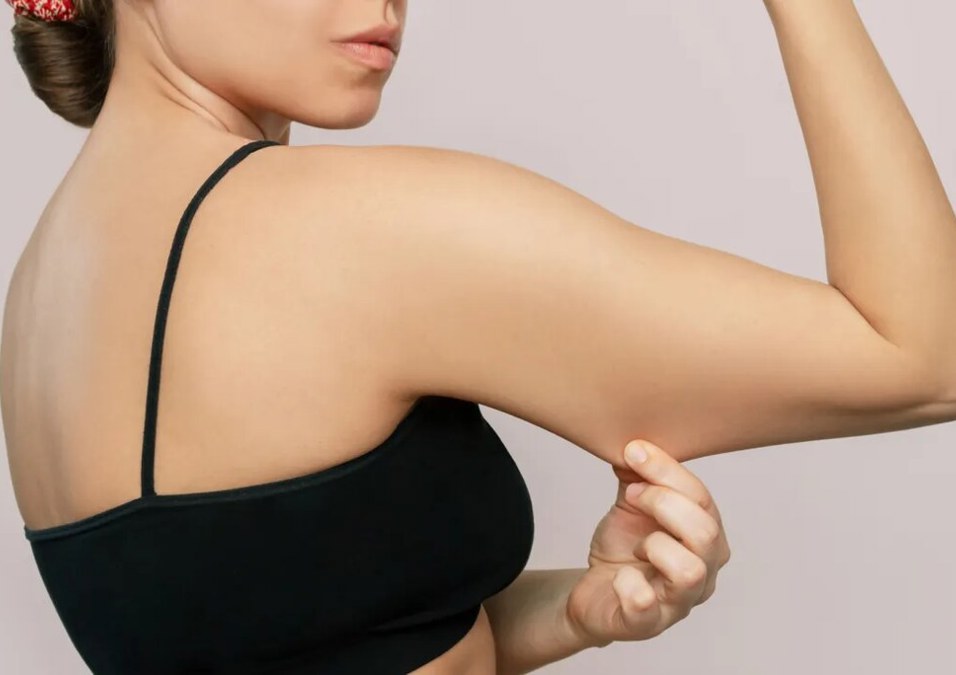Natural Skin Tightening Tips

SIGN UP FOR YOUR FREE DAY PASS TODAY!
Losing weight comes with numerous benefits like improved health, increased energy, and boosted confidence.
However, one potential downside of significant weight loss is the development of loose, saggy skin.
To help you address this issue, we’ve gathered insights from experts and individuals who’ve experienced this themselves. Below, you’ll find natural remedies and more advanced solutions to consider.
Why Does Loose Skin Occur After Weight Loss?
Skin is an incredibly adaptive organ with three main layers:
- Epidermis: The outermost layer that shows your skin’s tone.
- Dermis: The middle layer, which contains stretchy elastin fibers that provide firmness.
- Hypodermis: The bottom layer, which cushions and insulates with fat.
When skin is stretched from excess weight over a prolonged period, these elastin fibers can weaken.
Once the weight is lost, the skin may struggle to return to its original form, leaving it loose and saggy. Fat and muscle loss during the weight-loss process can also contribute to this effect.
Who is Most Prone to Loose Skin?
Certain factors increase the likelihood of developing loose skin:
- The amount and speed of weight loss.
- The duration the skin was stretched.
- Age and genetics.
For instance, about 70% of people who lose a significant amount of weight (e.g., 100 pounds or more) through surgery experience excess skin, according to research in the Obesity Journal.
Why It’s Worth Addressing Loose Skin
Loose skin can affect body confidence and may lead to discomfort, irritation, or rashes in certain areas.
There’s also a concern that decreased collagen—a key protein in skin, ligaments, and bones—is linked to weaker tissues and health complications over time.
Anthony Youn, MD, a top holistic plastic surgeon, highlights the importance of addressing collagen loss to combat aging and improve skin elasticity. With that in mind, here are solutions for reducing or preventing loose skin.
Solutions for Managing Loose Skin
1. Use Compression Garments
Compression garments offer an immediate way to smooth the appearance of loose skin under clothing. Paulette Szalay, who lost 90 pounds, recommends brands like HoneyLove Shapewear for its comfort and ability to stay in place.
2. Apply Firming Creams or Masks
There are many skincare products designed to firm sagging skin:
- Ingredients to Look For:
- Retinol: Boosts collagen production.
- Bromelain: Derived from pineapples, it improves elasticity and firmness.
- Suggested Products:
- DropOff Body-Sculpting Serum for belly or thigh skin.
- Silicone neck masks like Taigaga Neck Wrinkle Patches to tighten and lift.
Consistently applying these products can improve skin texture over time.
3. Boost Collagen Levels
Collagen decreases naturally with age, with production dropping by about 1% annually after 25. By 50, you may have lost up to 50% of your collagen. This reduction can lead to sagging skin, slower wound healing, and even weaker bones.
- Supplements:
Hydrolyzed collagen powder is an excellent way to restore skin structure. A study published in Skin Pharmacology and Physiology revealed that oral collagen supplementation can reduce wrinkles by 20% and improve elasticity by 18%. Brands like Zint Collagen Peptides are worth considering.
- Diet Tips:
Incorporate bone broth, which is rich in collagen, into your meals. Wellness expert Kellyann Petrucci emphasizes its ability to improve skin elasticity and hydration while reducing sagginess.
4. Consider Non-Invasive Treatments
If you’re open to professional help, there are several advanced cosmetic solutions for loose skin:
- Laser Skin Tightening:
Uses heat to stimulate collagen growth and firm the skin.
- Microneedling:
Creates tiny injuries to trigger collagen production and repair.
- Cryoskin Therapy:
Utilizes cold temperatures to tighten skin and detoxify through the lymphatic system. Vivian Tordeau, who lost 96 pounds, swears by it as an effective alternative to liposuction.
5. Surgical Skin Removal
For those with significant loose skin, surgical options like tummy tucks, arm lifts, or lower-body lifts may offer a lasting solution.
Shelley Hughes, who lost 95 pounds, underwent surgery to remove 4 pounds of excess skin after finding it painful during activities like swimming.
However, surgery can cost $10,000–$15,000 per procedure and is rarely covered by insurance.
6. Accept and Celebrate Your Skin
Many individuals choose to embrace their loose skin as a reminder of their weight-loss achievements.
Susan Mackey, who shed 116 pounds, now confidently wears sleeveless shirts despite the loose skin on her arms. For her, it symbolizes the distance she’s come.
Natural Techniques to Prevent Loose Skin
Stay Hydrated
Proper hydration is essential for maintaining skin elasticity. Javanna Buehler, who has lost 105 pounds, drinks plenty of water to minimize loose skin as she continues her gradual weight-loss journey.
Aim for at least eight glasses of water a day, and consider using an eco-friendly water bottle like Ocean Bottle, which supports environmental cleanup.
Follow a Healthy Diet
A balanced diet rich in:
- Healthy Fats (e.g., avocados, nuts).
- Proteins for tissue repair.
- Fruits and Veggies loaded with antioxidants.
These nutrients strengthen skin cells and combat free radical damage.
Walk and Strengthen Your Muscles
Walking combined with strength training can create a toned and firm appearance. Fitness expert Denise Austin suggests special variations like walking up stairs or backward for additional toning benefits.
Final Thoughts
Loose skin after weight loss is a common issue, but it doesn’t have to hinder your accomplishments.
Whether you choose to accept it, minimize it naturally, or address it with professional solutions, the key is to do what feels right for you.
Remember, your weight-loss journey is about more than appearance; it’s about reclaiming your health and confidence. Sip water, stay active, and celebrate the body you’ve worked so hard for!
Source: firstforwomen
The opinions shared in the GymNation blog articles are solely those of the respective authors and may not represent the perspectives of GymNation or any member of the GymNation team.
GET YOUR FREE TRIAL TODAY

















































































